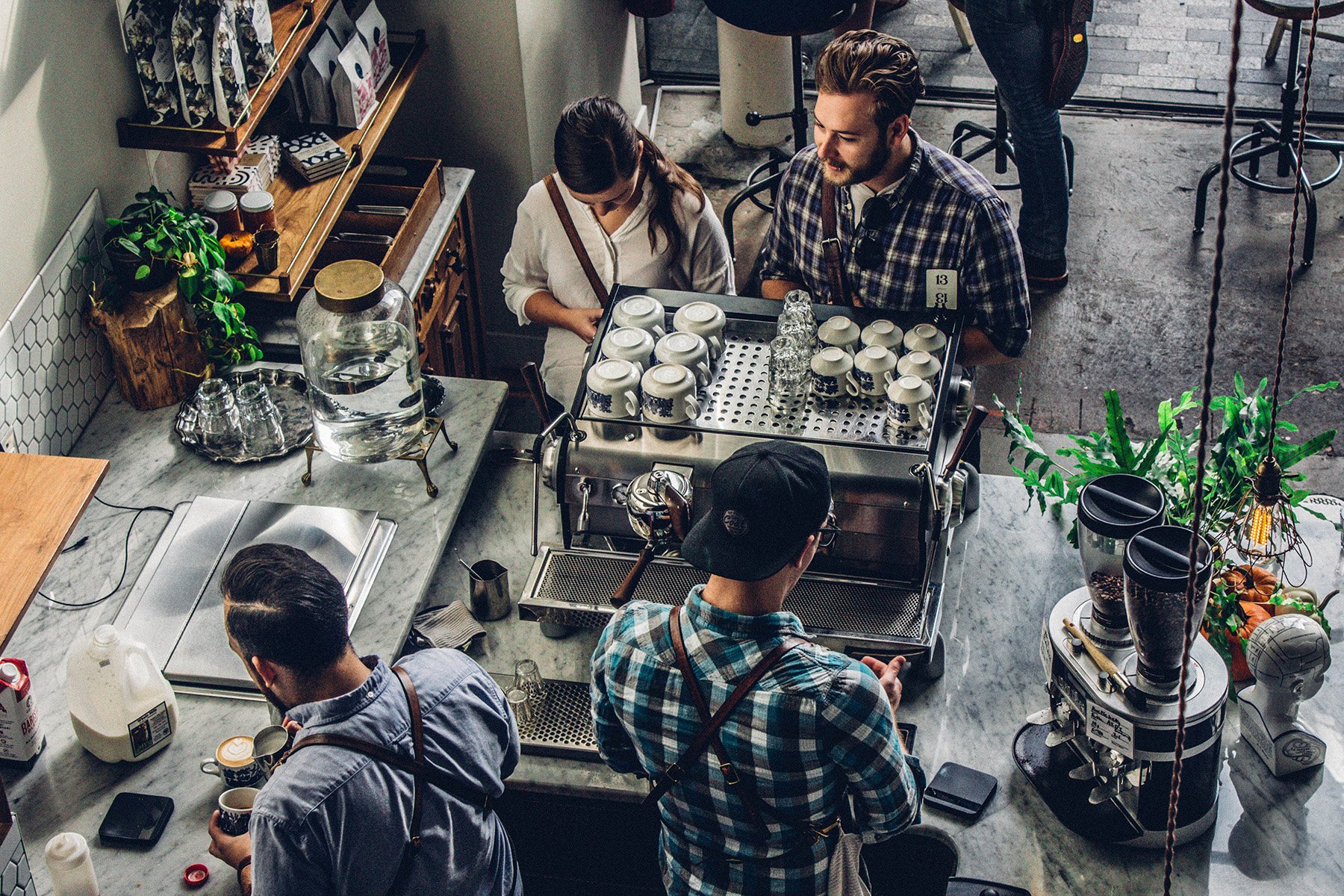
With hundreds of commercial espresso machines available, finding the right one can be a challenge. Follow this guide to get the right machine for your business.
Selecting your next espresso machine is tricky. It can be difficult to understand their features, know what’s hype, what’s on trend and what is necessary future proofing. Compounding the situation, it’s difficult to have a practical understanding of how baristas will use the machines in the hustle-and-bustle of service, how to get the best price, and what the ongoing service and maintenance requirements are.
The United Baristas guide to buying an espresso machine draws together firsthand experience, tips from the coffee shops getting it right, and insights from across the coffee industry. Use the guide to work out what’s important to you, and your business, so you can set up your coffee programme for success.
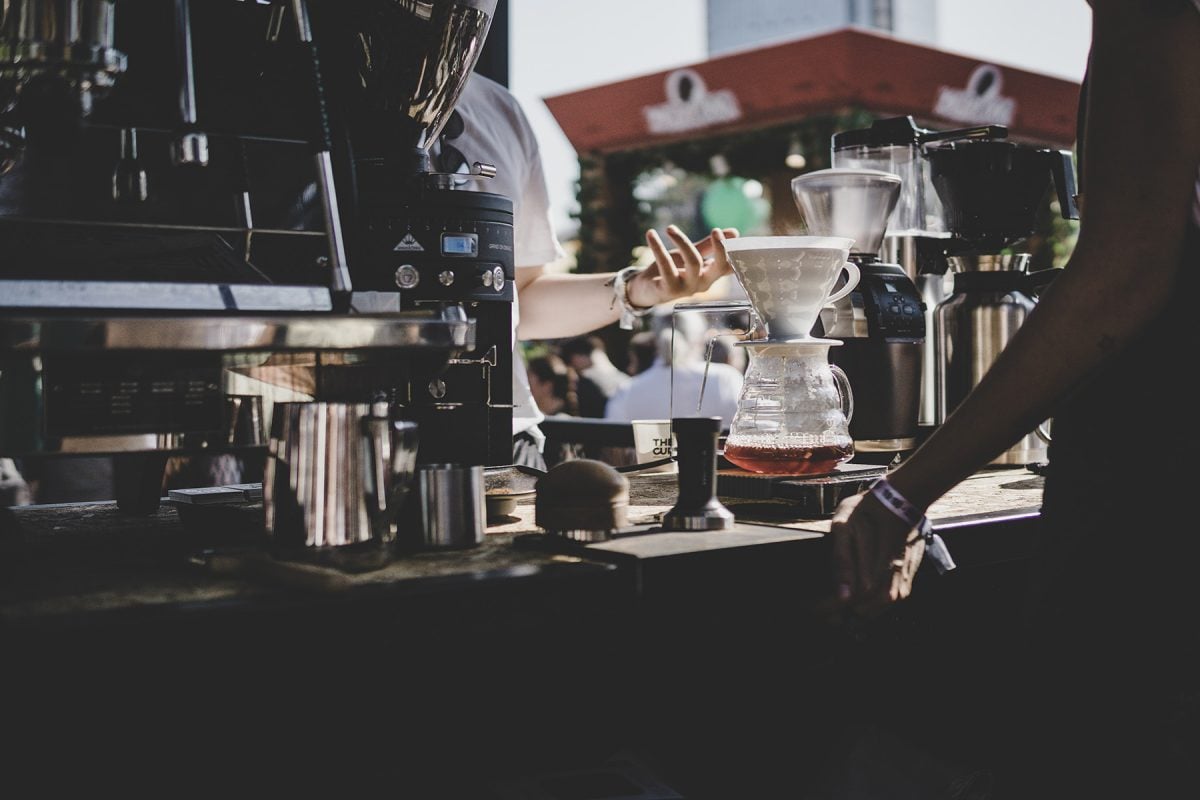
Getting the price right
Understand the supply chain
Let’s cut to the chase. Cost is a critical factor, and one that most equipment sales people don’t like to talk about. But getting the right machine at the right price is key for business success.
If you are buying an espresso machine for use in a shop, café, restaurant, or bar, you are mostly likely to purchase this machine from a ‘reseller’. Resellers may be a roaster, engineer, or equipment business, that typically acts as a sales agent for a brands’ distributor in your country.
When you order an espresso machine, the item is typically shipped from the distributor or manufacturer’s warehouse. Obvious exceptions include bespoke machines, which are made to order.
The price that you pay will depend on the:
- Total number of items being purchase
- Your relationship with the reseller
- The type of reseller
- Negotiation
For example, if you are purchasing from a coffee roaster the price might include advice on opening your coffee shop and barista training. Or if you purchase the item from an engineer, there might be service contact options.
As each brand has a distinct sales and distribution strategy, comparing packages for similar models from competing brands can be like comparing apples with pears – tricky but not impossible.
To make this process manageable, we recommend identifying a shortlist of two or three espresso machines that meet your needs and reaching out to a range of resellers to best understand the specific options available for your desired items.
Many resellers have identified common packages of equipment and services to enable them to quote rapidly and easily. An advantage of identifying equipment ideal for your needs in advance of requesting a quotation is that you have opportunity to sense-check whether the proposed packages are suitable for your business.
Consider the total package
Once you have identified the items suitable for your coffee business, remember to consider the total package. If the package normally comes with training, support or services that you do not require, or will source from elsewhere, make sure you get a bespoke quote that reflects this.
Conversely, you will never be in a stronger position to negotiate the package options, such as training, support, service contracts, and your coffee price, as when you are ordering your equipment.
Whichever route is best for your business, follow it through to make sure you get the best deal. After all, it will be your business to run, your equipment to maintain, and your customers to serve in the future.
Leasing espresso machines
Some coffee roasters offer leasing, or even free equipment, when taking out a contract to purchase their coffee. This can make sense for some establishments, especially as these machines typically include parts and servicing, since the ownership is typically retained by the roaster.
For proprietors pursuing this approach, it will often be their primary criterion. While it is a valid option, leasing a machine is not strictly with scope of this guide; however, many of the points below still apply. It’s important to remember, whether buying or leasing, you’ll pay for the cost of the machine.
Upcoming Events
UK Cup Tasters Championship 2023
Manchester Coffee Festival 2023
Amsterdam Coffee Festival 2024
London Coffee Festival 2024
Terms and Financing
Most resellers require payment to confirm your order. This is in part because, especially if you are a new or unknown business, you pose a credit risk and in part because they’ll quite possibility have to pay the distributor or manufacturer to release the goods to them.
Many resellers will offer finance options from a third party. Under this arrangement, they’ll make an introduction with the total value of the goods to be purchased. Upon approval, the finance company pays the reseller for the goods, and you make regular payments to the finance company for the agreed term.
There are a variety of companies offering commercial financing for coffee equipment, so the company that the reseller proposes may not be the best for your circumstance. It’s worthwhile getting quotes from a broker or several businesses to ensure you are financing the equipment at a competitive price. The interest rate will typically depend on your business experience, the company’s credit score, and whether you provide a personal guarantee.
In broader terms, it makes more sense to finance coffee equipment when the financing interest rate is lower than your cost of capital, and it’s necessary if you don’t have other access to the funds.
The negotiations for the package price and the financing arrangements are two separate discussions, so make sure you are getting the best option for your business at each stage.
Running Costs
Many first time operators underestimate the costs of operating an espresso machine. It’s most likely that you’ll need to budget on water filtration, quarterly or bi-annual servicing, and an annual service and boiler inspection. For most businesses these costs run into the thousands of pounds per annum.
The costs for servicing and parts are broadly similar between brands. However, some brands and models are more reliable, and some models are more easily serviced than others.
It’s worthwhile to accurately budget the running costs. Without maintenance an espresso machine will have a working life of just a year or two. With ongoing care and maintenance, many machines can be in use for over a decade.
Energy Efficiency
Espresso machines are extremely power hungry. Many models consume around 15,000 kWh each year, a cost of ~ £10,000 at current electricity prices. Most machines have a significant baseload keeping water near boiling and will consume a large quantity of electricity, even if only used to prepare a few coffees. And espresso machines are the key cause of an espresso’s carbon footprint.
There’s a new generation of espresso machine coming to market with smaller, energy-efficient boilers and heat recovery technologies, such as Victoria Arduino’s Eagle One.
At present there is no regulatory standard for either measuring or communicating an espresso machine’s energy efficiency. However, good resellers and importers should be able to provide relevant information on request.
Resell Value
Like cars, appliances and electronics, espresso machines loose a significant amount of their value as soon as they are purchased. Espresso machines then typically depreciate in value over the duration of their working life.
With many shops intending to upgrade their machine ever five years or so, it makes senses for you to estimate in advance what the resell value might be.
How to value used coffee equipment
Total Cost
The total cost of your machine is
Purchase price + financing cost + running costs – resell value
You can work this out on an annualised basis:
(Purchase price + financing cost + running costs – resell value)
/ years of use
The cost of an espresso machine is a relatively small part of a coffee shop’s total running costs, but successful operators will seek to minimise these costs and maximise the value they get from the equipment and services in order to run a profitable and viable business.
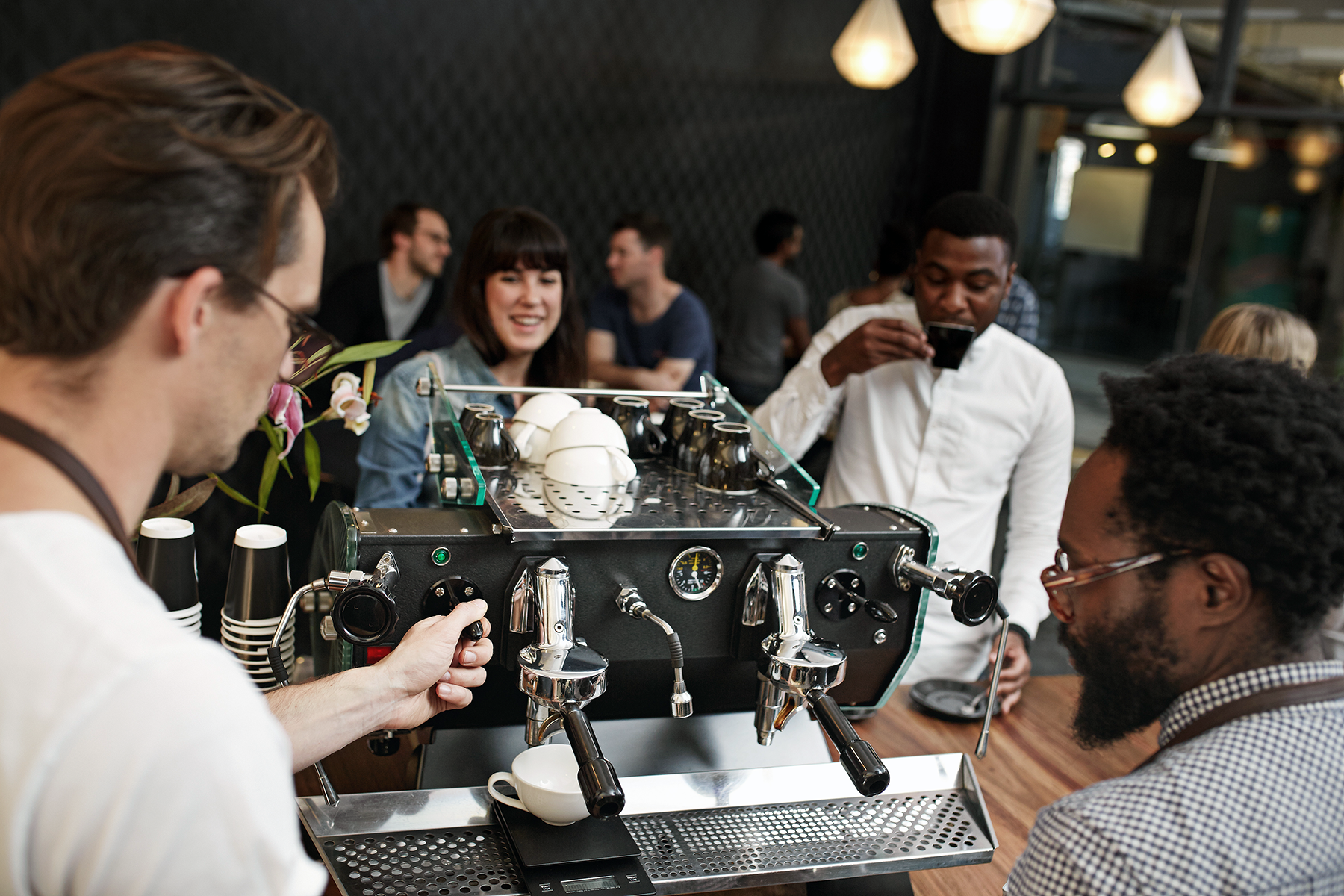
Practical considerations
There are a variety of practical considerations for choosing the right espresso machine for your business.
Operational capacity
Espresso machines are designed to manage volumes of throughput. Both the total volume and peak volume matter.
A machine which is not designed to cope with your total volume will suffer wear more quickly. If a machine was to exceed its peak operating capacity, it would struggle to maintain the desired water temperature when preparing espresso and/or suffer reduced stream pressure.
An espresso machine’s operational capacity is typically expressed as cups per day (units out) or kilograms per day (coffee in).
Many first time operators while be tempted to over-specify their espresso machine so there is no risk of under-performance. The trait is often exacerbated by sales people who may well encourage you to be ambitious for your business.
In practice many coffee shops and restaurants find that they reach the premises’ operational capacity – because of the number of seats, wait times, or premises configuration – before they hit the machine’s operational capacity.
United Baristas has been encouraging operators to order espresso machines that are suitable for their requirements, as a significant portion of the coffee industry’s carbon footprint is from espresso machines heating hot water. A too large or over-specified machine will have no additional commercial benefit, but have higher running costs, take up more space, use more electricity, and have a greater carbon emissions.
There are two aspects to specifying capacity:
Groups
Many espresso machines are available in two and three group configurations, with some models being available in one, four, and even five group options as well.
Three group machines have been popular, however, even in busy service typically only two groups get used at any given time as there is often insufficient longitudinal workspace for more than two baristas. Consequently, many coffee businesses will benefit from the smaller footprint of a two-group machine and the often have sufficient capacity for many coffee shop businesses.
Reducing environmental impacts in coffee shops
If more groups are required, an option is for businesses to purchase two, two-group machines. While there is additional cost, the benefit is that one machine can be taken out of service for maintenance or repair without halting coffee service.
Boiler capacity and heating technology
It is difficult to make a one-size fits all recommendation for boiler capacity and heating elements. This is because many brands have proprietary boiler technology or historical preferences that have various strengths and benefits.
It is not the purpose of this guide to compare various approaches and technologies, but it is important that you understand the performance outcome of the machines you are considering.
Espresso machines are designed to manage particular volume with specific tolerances for temperature stability. So a machine might be designed for lower volume, but higher temperature stability and precision, or some other mix of the two variables. Obviously, machines that are designed for higher volume and greater temperature stability and precision are generally more expensive as they use larger boilers, bigger elements, and/or more sophisticated technology.
The ability to control, vary and profile changes in pressure and temperature are another layer of features, which add additional technology and cost to the espresso machine.
A good reseller will be able to tell you an espresso machine’s operational capacity, either from the manufacturer’s literature or experience. If they are not sure, feel free to reach out to the country’s distributor for additional information.
Identifying your needs will help you identify which model(s) and configurations within various manufacturers’ range are best suitable for you. It’s also worth taking these other factors into account.
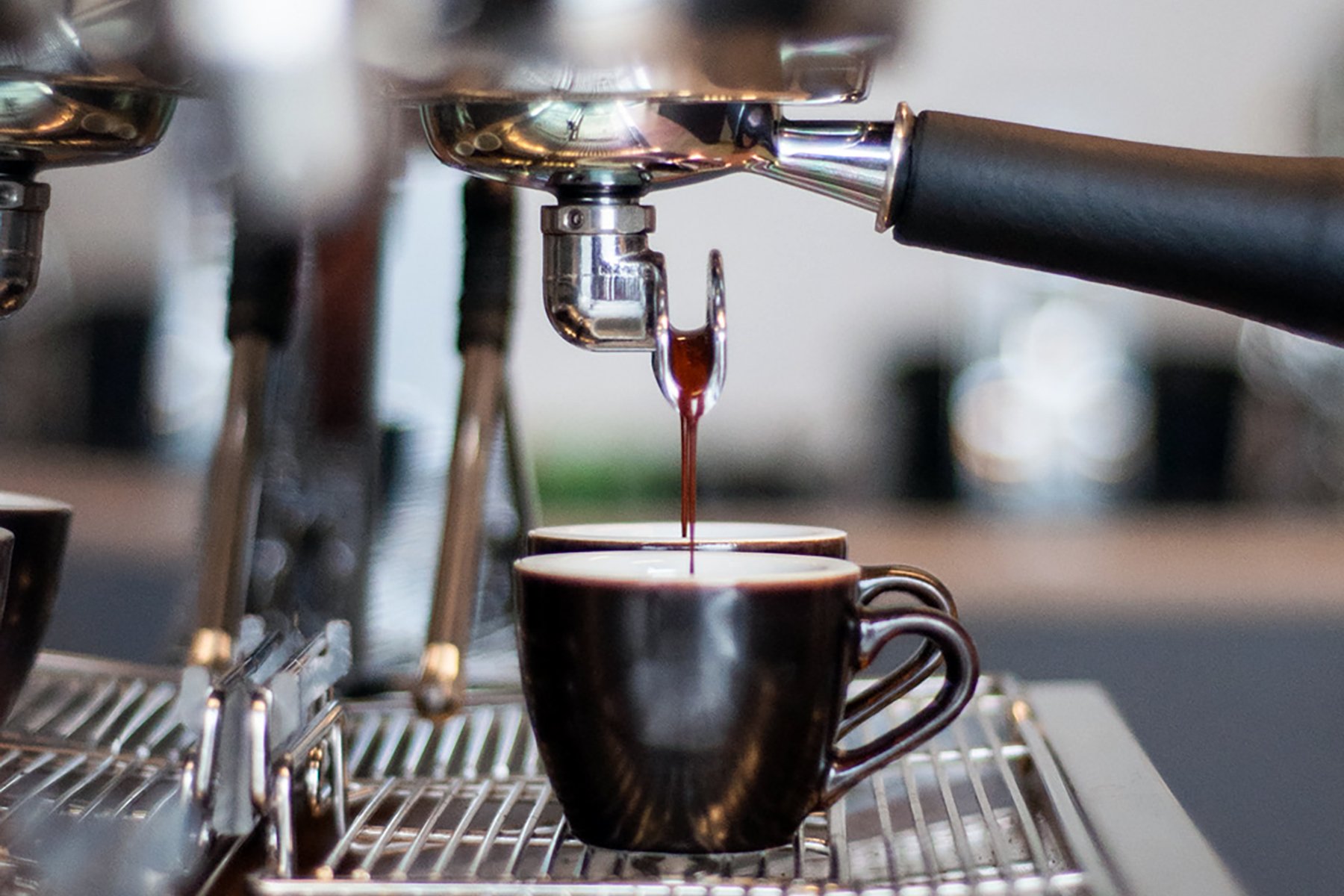
Features and Functionality
Some espresso machines have greater functionality, such as being able to control or pre-programme the shot by time, volume or weight.
These functions are designed to make the baristas job either easier and more accurate:
- Timers run the shot for a pre-programmed duration
- Volumetric machines deliver a pre-programmed volume of water through the group head
- Mass based functions measure the weight of the extracted coffee (and the time) to determine the cut off point
In general, mass based measurement is superior to volume based measure, which are in turn superior to shot timers. However, a) the more sophisticated the technology, the greater the cost of the machine, b) the technology is only as good as its operator, and c) it’s important that the machine is fit for purpose for your shop’s proposition and customers.
Consequently, there is a balance to be struck between the benefits it delivers to your business and the cost as well as a fit with your budget, ethos and proposition.
Finally, most espresso machine manufacturers have strong reliability track records on their less sophisticated machines; the better manufacturers have strong track records with more sophisticated technology, and have the after sales service to back it up.
For most operators it is prudent to avoid complex machines from brands with unproven track records and particularly those that don’t have established after-sales service programmes in place.
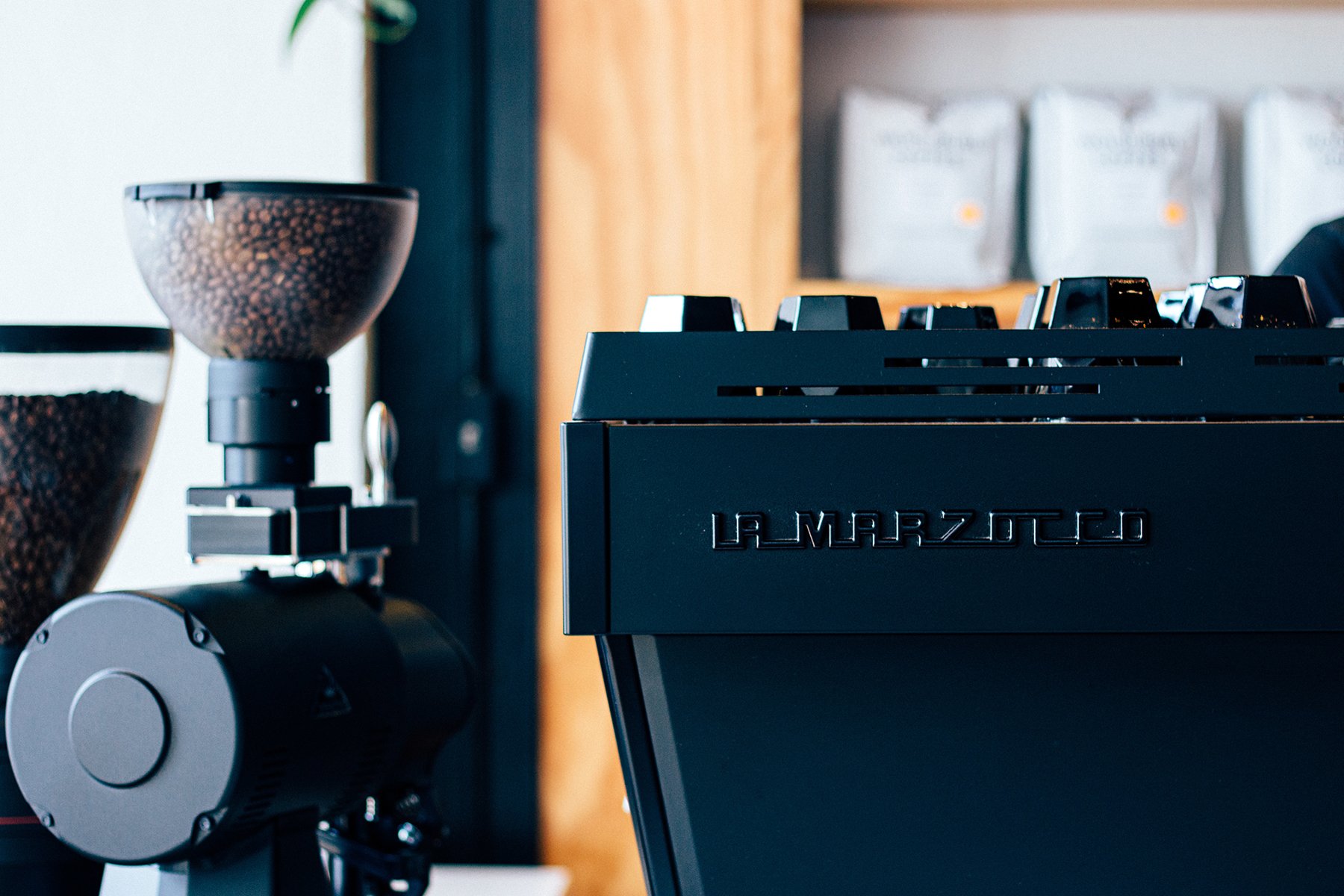
Servicing and Parts
While there are engineers nationwide, not all brands have equal nationwide support. Having a reputable engineer that carries common parts that are local to you will typically reduce your maintenance costs, and reduce downtime should you suffer a breakdown.
Care and Servicing
All espresso machines require ongoing care, maintenance and servicing. Some care and maintenance tasks can be carried out internally, depending on your organisation’s capacity and knowledge. It is useful to understand the various ongoing care and maintenance tasks required and identify how these will be performed.
Understand maintenance regimes
All espresso machines require periodic servicing by an engineer and an annual boiler inspection. These are two separate tasks, but many companies will opt to get them performed at the same time.
Find engineers certified to perform boiler inspections
Parts
Parts are typically held by a national distributor, or their agent. It is worthwhile making sure that the model under consideration has a ready availability of parts. The is a question typically best asked of the distributor, rather than their reseller. Most machines with comprehensive after-sales service will have both parts in your country (being told that parts can be flown in is less than ideal), and even better is parts held in stock by your local accredited engineer.
Service Contracts
Depending on your maintenance regime, it may make best sense to take out a service contact. This helps because maintenance can be carried out regularly, preventably, and at a pre-agreed cost.
In general it is better to take out a service contact with the company that will actually perform the servicing. For example, there is little point taking out a contract with your roaster if they’ll sub-contract the work to an engineer (unless for some reason it happens to be cheaper, which is unlikely but possible).
New operators may be tempted not to put appropriate service arrangements in place because most new espresso machines require little maintenance within the first year of use. However, the medium term cost of repair and inconvenience from downtime will quickly persuade proprietors of this necessity.
Consequently, if you don’t place a machine in a service contract, you’ll need to manage a care and maintenance regime yourself and get an engineer in to perform work that you are either unable or unqualified to do.
Engineers providing service contracts
Aesthetics and prestige
Some coffee business will want an espresso machine to match their decor, and some businesses will use the specification of their equipment to help attract baristas during recruitment (it is quite common to see shop equipment specifications as part of job listings on United Baristas Jobs, for example).
Both of these factors may encourage coffee shops to increase their specification and budget. There is no one right approach here, but make sure that if you are going to over specify your espresso machine for reasons of aesthetics or prestige that it is a key part of our business strategy, and that you’ll financially recoup the investment.
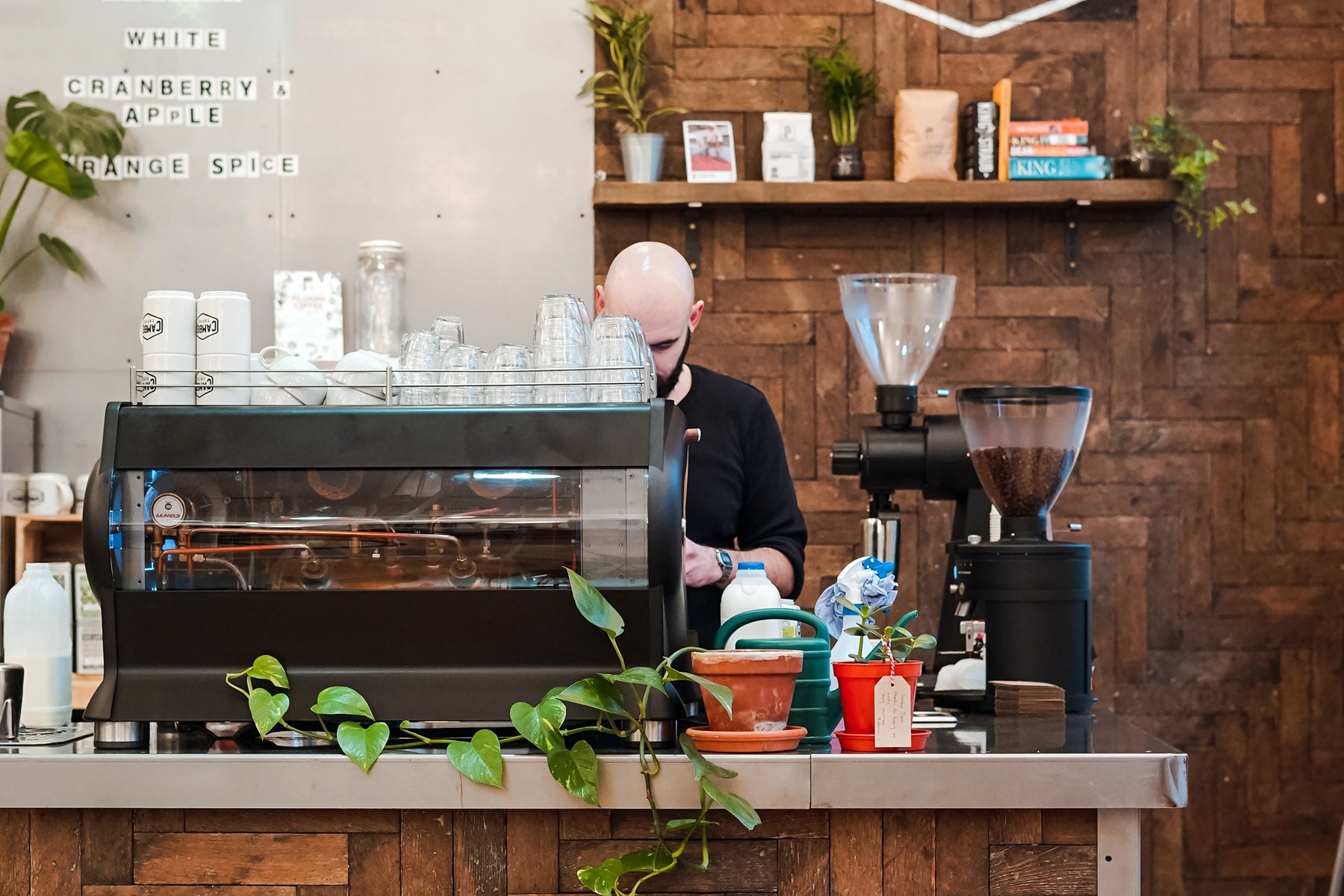
Identifying resellers and engineers
With your short list of espresso machines in hand, you are now ready to reach out to resellers for quotation and to better understand their services.
Consider buying used equipment directly from other baristas on United Baristas Marketplace
Identifying the resellers and engineers that are right for your business is a sizeable project, so give yourself the time to research properly, explore options, and compare services. This time investment can be justified if you intend to build supplier relationships that ensure for the medium or longer term. Most good resellers and engineers will welcome thoughtful and considered enquiries, and be suspicious of last minute or ad hoc decisions.
For some business it will make sense to source their espresso machine and other coffee equipment from their roaster, but there is no obligation or necessity for them to do so.
For other business it will make sense to source their espresso machine through an engineer, and take out a service contract. But again there is no obligation or necessity for to do so.
For other business they will mix-and-match equipment supplier, roaster, training, and engineering services across various suppliers.
The best strategy for sourcing equipment for your business, will depend on your specific needs for set up advice, barista training, coffee supply, and equipment servicing. There are many businesses offering one, some, or all of these services, and you should assemble a list of suppliers that best compliment your skills, suit your business requirements, and that you can work with over the medium term.
Show a little commitment
With a bit of research and investigation, using this guide you should be able to narrow down the hundreds of machines available to a select few that are suitable for your business. Once your’ve made your decision, commit to it for a period of time and make it work for your business.
Remember this marks the start of the journey. To protect your investment, to commercially capitalise on its potential, and to maintain a smooth running if your business, learn as much as you can about how it works, how to maintain it, and how to make the best espresso.
So, grab a coffee, sit down, and start to build a plan for sourcing your next espresso machine.







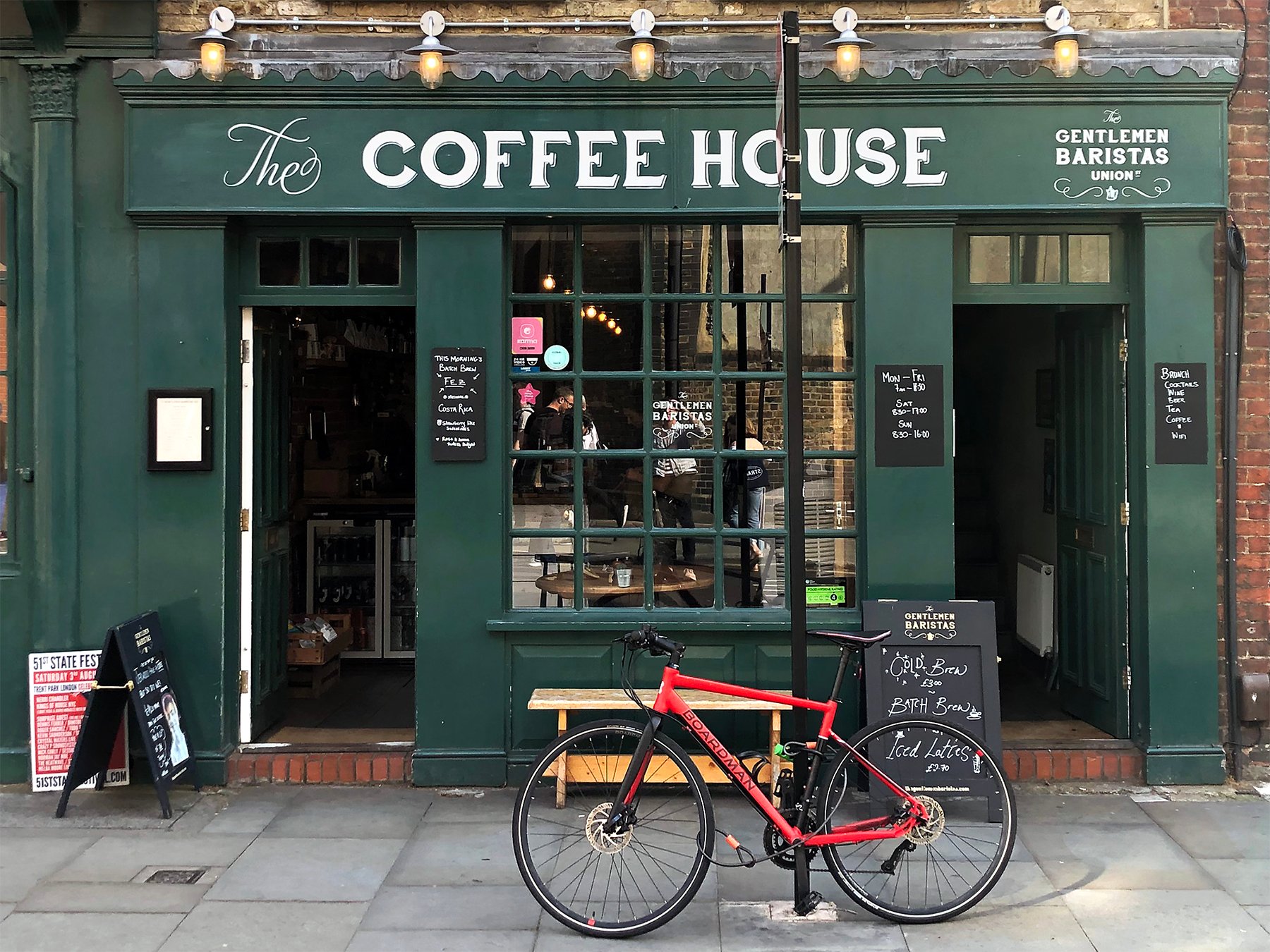
 Give Coffee If you found this article useful, show your appreciation
Give Coffee If you found this article useful, show your appreciation